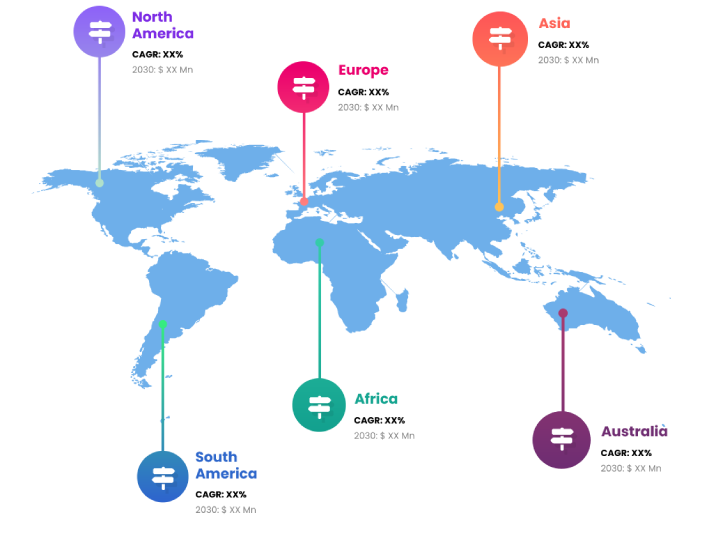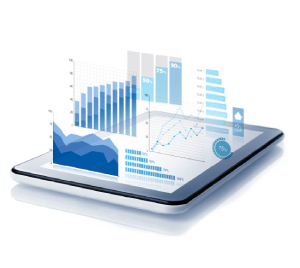
In order to collect data or keep tabs on physical or environmental factors, there are devices that can be linked to the Internet of Things (IoT) called sensors. The data collected by the sensor is subsequently sent to an Internet of Things (IoT) platform or gateway where it can be analyzed, stored, and, in certain cases, activated.
As more and more industries recognize the value of sensors, the market for these devices continues to expand. Despite the widespread use of Internet of Things (IoT) sensors, the manufacturing, transportation, agriculture, and healthcare industries account for the vast majority of their deployments. There is an extensive selection of industrial IoT sensors to meet almost every purpose in the industrial sector. In mission-critical industrial settings, these sensors can provide unparalleled asset protection while simultaneously enhancing processes. As new technologies emerge and companies have different demands, sensing technology and its many uses are always developing. From distance to temperature to pressure, there is a sensor for it on the Internet of Things (IoT).
Furthermore, physical, chemical, or biological values can be reliably and accurately measured using IoT sensors. Their dependability has led to their extensive usage in many different sectors, including healthcare, infrastructure, and industry. With the help of the Internet of Things (IoT), which makes heavy use of sensors, infrastructure systems like smart grids, smart houses, smart water networks, and intelligent transportation are able to communicate with one another. Prominent elements propelling the Internet of Things (IoT) sensors industry growth include the rising demand for linked and wearable devices, the expanding use of IoT sensors in industrial and automotive applications, and the expanding number of IoT sensors in general.
Sensors are finding uses in numerous industries, including transportation, medicine, and consumer goods, as a result of the widespread use of microelectromechanical systems (MEMS) technology and the fast shrinkage of sensor sizes. The entire sensors market has grown due in large part to this. Smartphones, drones, wearables, and robots are just a few examples of the many gadgets that have included tiny sensors in the past five years.
Despite the immense potential of the Internet of Things (IoT), some worry about the security and privacy of data collected by IoT devices. Data drives the Internet of Things (IoT). Each second, sensors and gadgets linked to the Internet of Things produce an enormous amount of data. Businesses and other organizations collect this data using a variety of sensors, which they then utilize to inform their decisions. Because more and more of their real-time business processes rely on data created by machines, it is crucial that the data be authentic and that the devices used to gather it are secure, resilient, and reliable. Malware has more dispersed entry points thanks to the Internet of Things (IoT) because it links so many devices. Internet of Things (IoT) devices pose a threat to other devices in the network if they are not adequately protected from cyberattacks.
Region, end use, network technology, and sensor type are the four main categories that make up the worldwide IoT sensors market. Sensors can be classified according to their type, which includes temperature, proximity, pressure, level, gas, image, optical, gyroscope, humidity, accelerometer, and many more. It can be classified as either wired or wireless depending on the type of network technology used. Wi-Fi, Bluetooth, Zigbee, Z-Wave, near field communication, radio frequency identification, and other similar technologies make up the wireless technology category. Consumer electronics, transportation, agriculture, food and beverage, industrial healthcare, consumer electronics, aerospace and defense, and other end uses are its main divisions.
Consumer, medical, and automotive gadgets now use sensors on a regular basis, thanks to microelectromechanical systems (MEMS) technology and the rapid shrinkage of sensor sizes. Because of this, the sensors market has grown substantially. Over the last five years, we've seen a proliferation of smaller sensors in electronic devices such as cellphones, drones, wearables, and robots.
Report Coverage
Global IoT Sensors research report categorizes the market for global based on various segments and regions, forecasts revenue growth, and analyzes trends in each submarket. Global IoT Sensors report analyses the key growth drivers, opportunities, and challenges influencing the global market. Recent market developments and IoT Sensors competitive strategies such as expansion, product launch and development, partnership, merger, and acquisition have been included to draw the competitive landscape in the market. The report strategically identifies and profiles the key IoT Sensors market players and analyses their core competencies in each global market sub-segments.
| REPORT ATTRIBUTES | DETAILS |
|---|---|
| Study Period | 2017-2031 |
| Base Year | 2023 |
| Forecast Period | 2023-2031 |
| Historical Period | 2017-2021 |
| Unit | Value (USD Billion) |
| Key Companies Profiled | Siemens, Murata Manufacturing Co., OMRON Corporation, Infineon Technologies, General Electric, TE Connectivity, NXP Semiconductor, STMicroelectronics, Texas Instruments, Honeywell |
| Segments Covered | • By Product |
| Customization Scope | Free report customization (equivalent to up to 3 analyst working days) with purchase. Addition or alteration to country, regional & segment scope |
Key Points Covered in the Report
- Market Revenue of IoT Sensors Market from 2021 to 2031.
- Market Forecast for IoT Sensors Market from 2021 to 2031.
- Regional Market Share and Revenue from 2021 to 2031.
- Country Market share within region from 2021 to 2031.
- Key Type and Application Revenue and forecast.
- Company Market Share Analysis, IoT Sensors competitive scenario, ranking, and detailed company
profiles. - Market driver, restraints, and detailed COVID-19 impact on IoT Sensors
Market
Competitive Environment:
The research provides an accurate study of the major organisations and companies operating in the global IoT Sensors market, along with a comparative evaluation based on their product portfolios, corporate summaries, geographic reach, business plans, IoT Sensors market shares in specific segments, and SWOT analyses. A detailed analysis of the firms' recent news and developments, such as product development, inventions, joint ventures, partnerships, mergers and acquisitions, strategic alliances, and other activities, is also included in the study. This makes it possible to assess the level of market competition as a whole.
List of Major Market Participants
Siemens, Murata Manufacturing Co., OMRON Corporation, Infineon Technologies, General Electric, TE Connectivity, NXP Semiconductor, STMicroelectronics, Texas Instruments, Honeywell
Primary Target Market
- Market Players of IoT Sensors
- Investors
- End-users
- Government Authorities
- Consulting And Research Firm
- Venture capitalists
- Third-party knowledge providers
- Value-Added Resellers (VARs)
Market Segment:
This study forecasts global, regional, and country revenue from 2019 to 2031. INFINITIVE DATA EXPERT has segmented the global IoT Sensors market based on the below-mentioned segments:
Global IoT Sensors Market, By Type
Temperature Sensor
Proximity Sensor
Pressure Sensor
Level Sensor
Gas Sensor
Image Sensor
Optical Sensor
Gyroscope Sensor
Humidity Sensor
Accelerometer Sensor
Other
Global IoT Sensors Market, By End User
Consumer Electronics
Automotive
Industrial
Healthcare
Food & Beverage
Aerospace & Defense
Transportation
Agriculture
Others
Global IoT Sensors market, Regional Analysis
- Europe: Germany, Uk, France, Italy, Spain, Russia, Rest of Europe
- The Asia Pacific: China,Japan,India,South Korea,Australia,Rest of Asia Pacific
- South America: Brazil, Argentina, Rest of South America
- Middle East & Africa: UAE, Saudi Arabia, Qatar, South Africa, Rest of Middle East & Africa
You will get in-depth and extensive iot sensors market market research and competitor analysis for your business to help you develop more profound insights into the iot sensors market Market.
Through INFINITIVE Data Expert is a professional Market Research services, I will identify the iot sensors market market size, demand & opportunities, growth rate, and target audience with a comprehensive analysis of your competitors.



